Imagine stepping into your backyard oasis, where the perfect blend of sunlight and shade creates a sanctuary for relaxation and entertainment. Whether you’re a novice looking to breathe new life into a small patio or an experienced DIY enthusiast ready to tackle a sprawling garden, “12 Shade Ideas for Your Next Project” offers an array of creative solutions tailored for every skill level and space.
From boosting your home’s aesthetic appeal to enhancing your outdoor comfort, our guide is packed with practical tips designed to empower and inspire. Discover how the right shade elements can transform your outdoor area into a beautiful, functional space you’ll love. Let’s embark on this journey together, confident that these ideas will help you craft the perfect retreat right outside your door.
Install Retractable Awning Systems

Retractable awning systems offer an excellent way to provide flexible shade for your outdoor space, allowing you to enjoy sun or shade at your convenience. Choose durable materials like aluminum frames and waterproof, UV-resistant fabrics to ensure longevity and performance. For beginners, consider motorized systems that simplify operation, while more experienced DIYers might opt for manual options to save on installation costs.
When designing your awning setup, measure your space accurately to determine the correct dimensions and coverage area. Position the awning to maximize shade during peak sun hours, typically between 10 a.m. and 4 p.m. For a professional touch, coordinate the awning fabric with existing outdoor decor, such as furniture cushions or garden accents, creating a cohesive look. Advanced users might explore smart awning systems that can be operated via an app or integrated with home automation for ultimate convenience.
Utilize Pergolas for Versatile Shade
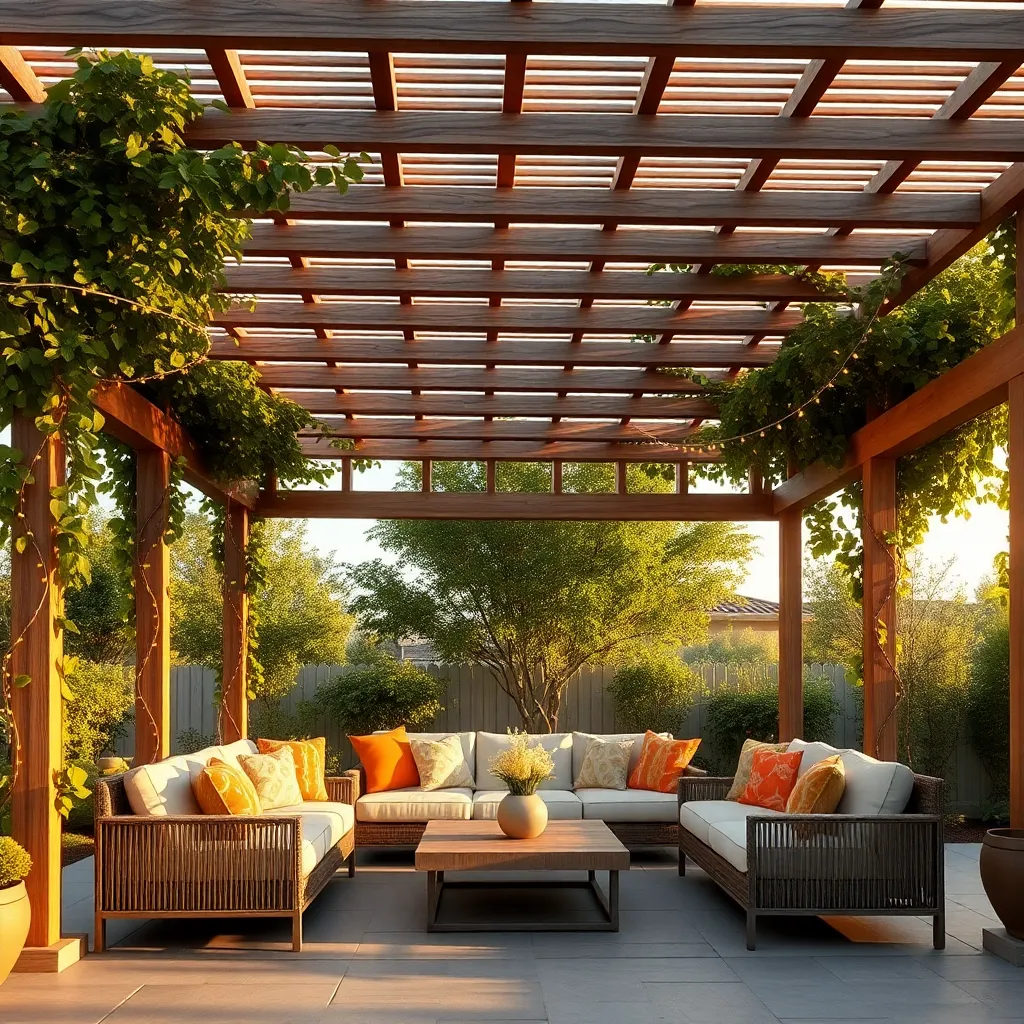
Pergolas offer a versatile solution for outdoor shade, providing both aesthetic appeal and functional coverage. **Choose materials** like cedar or pressure-treated wood for durability, and consider incorporating metal for a modern twist. **Design elements** such as latticed or slatted roofs allow for a customizable amount of sunlight, perfect for those who enjoy a mix of sun and shade. Beginners can opt for ready-to-assemble kits, which often include all necessary components for straightforward installation.
For a more advanced project, **consider integrating climbing plants** like wisteria or grapevines to naturally enhance the shade over time. **Ensure the pergola’s dimensions** are proportionate to your outdoor space; a typical size might be 10×10 feet, but larger areas can accommodate more expansive structures. Adding adjustable canopy panels can offer additional shade when needed. **Incorporate lighting** for evening enjoyment, using solar-powered string lights or integrated LED fixtures. This combination of design and functionality makes pergolas an inviting retreat in any garden setting.
Incorporate Shade Sails Creatively
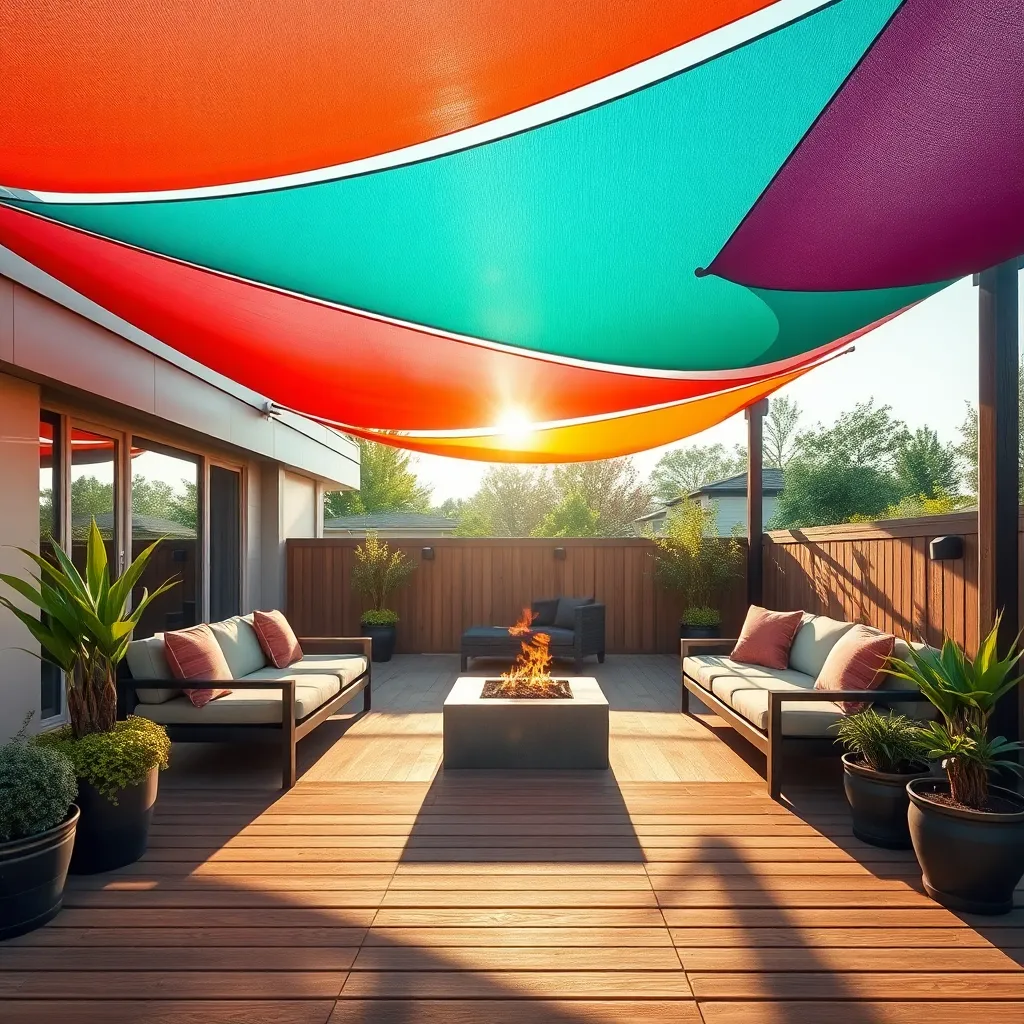
Consider using shade sails to bring an artistic flair to your outdoor space. These versatile structures are perfect for creating a dynamic look with their triangular or square designs. Choose UV-resistant fabric to ensure durability and protection from the sun. For a beginner-friendly installation, start with pre-made kits that include all necessary hardware, ensuring a hassle-free setup. To elevate the aesthetic, experiment with layering sails of different colors and shapes to add depth and interest to your garden or patio area.
For a more advanced approach, consider incorporating custom sail designs tailored to your specific space and needs. This might involve selecting high-quality marine-grade materials for enhanced longevity and stability. When positioning your shade sails, think about the sun’s path to optimize coverage throughout the day. Use sturdy anchor points like galvanized steel posts or attach to existing structures such as walls or pergolas, ensuring they are securely fastened to withstand wind and weather conditions. These thoughtful details will help create a stylish and functional outdoor retreat.
Design with Natural Tree Canopies
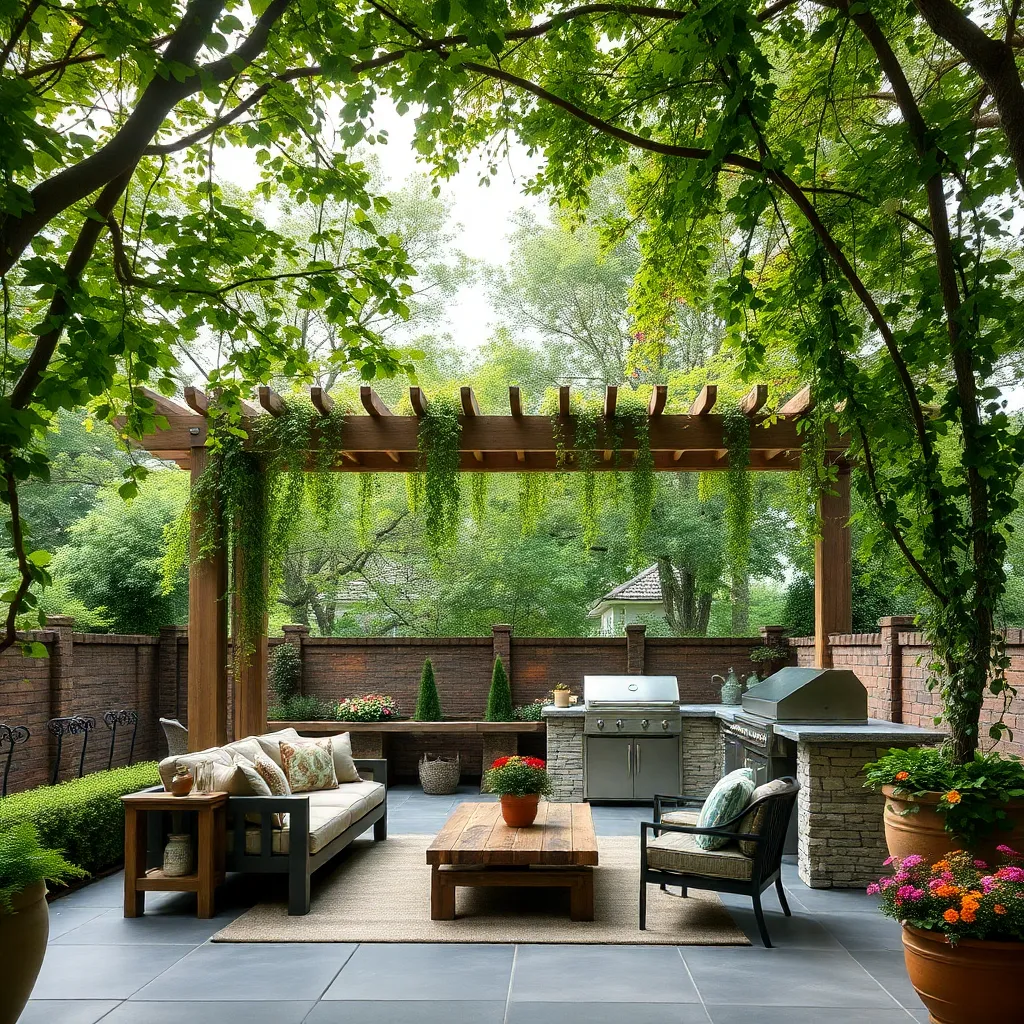
Utilizing the natural tree canopy as an outdoor shelter is an excellent way to blend design with nature. Select trees with broad leaves like oaks or maples, which provide substantial shade and a cooling effect during the hot months. Begin by evaluating the existing tree cover in your yard and consider planting additional trees to create a more comprehensive canopy over time. To enhance this natural shade, you might incorporate hammocks or hanging chairs that can be easily suspended from sturdy branches, offering a cozy retreat.
For a more structured approach, consider introducing a layered planting strategy that includes trees of varying heights for a tiered canopy effect. This not only boosts the aesthetic appeal but also improves the overall microclimate of your garden. To maintain a healthy canopy, ensure regular pruning and fertilization tailored to the specific needs of your tree species. Advanced gardeners may explore integrating a pergola beneath the canopy, which can serve as a base for climbing plants like wisteria or clematis, enhancing the natural beauty and providing additional shade.
Construct a Lattice Patio Cover
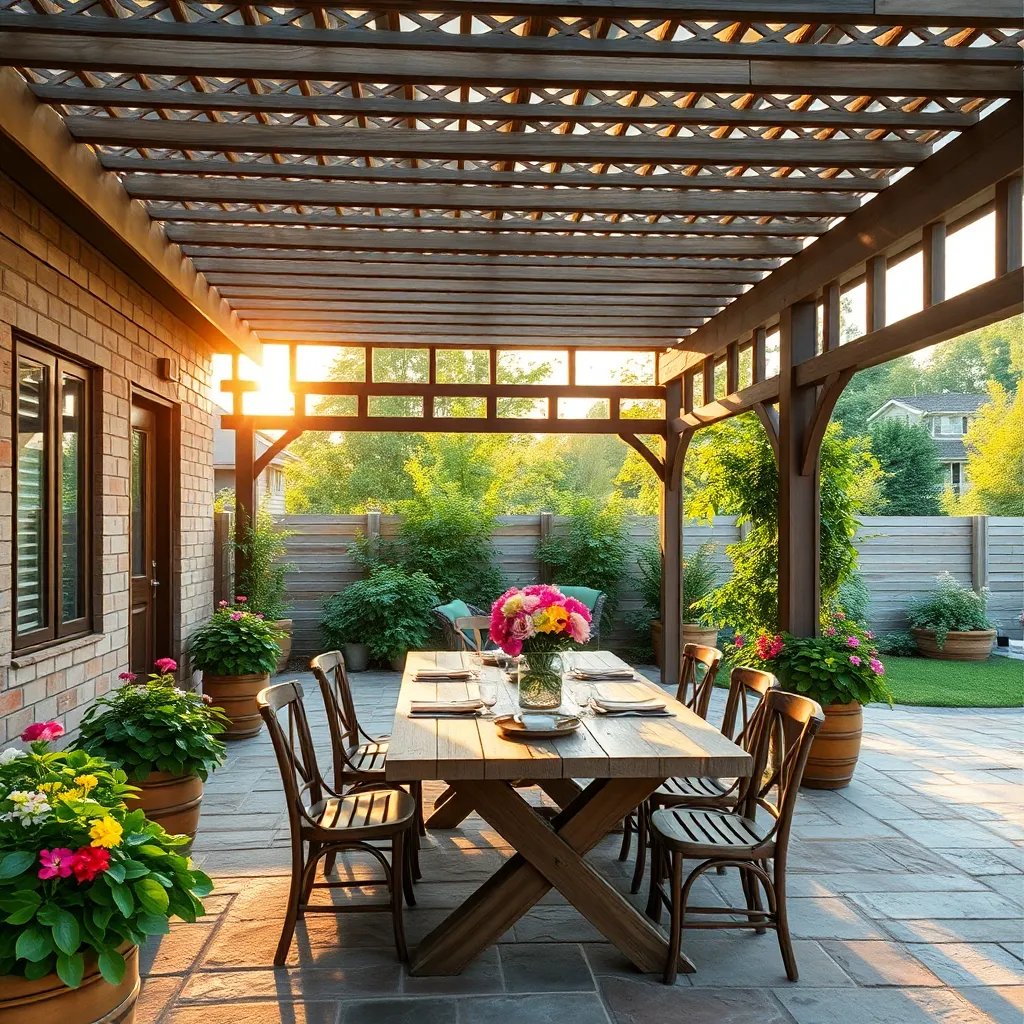
Crafting a lattice patio cover is a wonderful way to add a stylish and functional shade structure to your outdoor space. Start by selecting durable materials like cedar or pressure-treated wood, which offer longevity and resistance to weather elements. For beginners, a simple rectangular frame with evenly spaced lattice panels is ideal, while experienced builders might opt for intricate patterns or customized shapes to enhance the aesthetic appeal. Ensure that the support posts are securely anchored into the ground or existing patio to provide stability and endurance.
Consider incorporating climbing plants such as wisteria or jasmine to weave through the lattice, adding natural shade and a touch of greenery to your patio cover. When constructing, remember that proper spacing between the lattice slats is crucial—typically, a 2-inch gap provides a balanced mix of shade and sunlight. For a more advanced touch, you can integrate features like built-in lighting or a retractable canopy for versatility in different weather conditions. With these practical tips, your lattice patio cover will not only provide relief from the sun but also become a beautiful focal point in your outdoor living area.
Add Freestanding Umbrellas Strategically
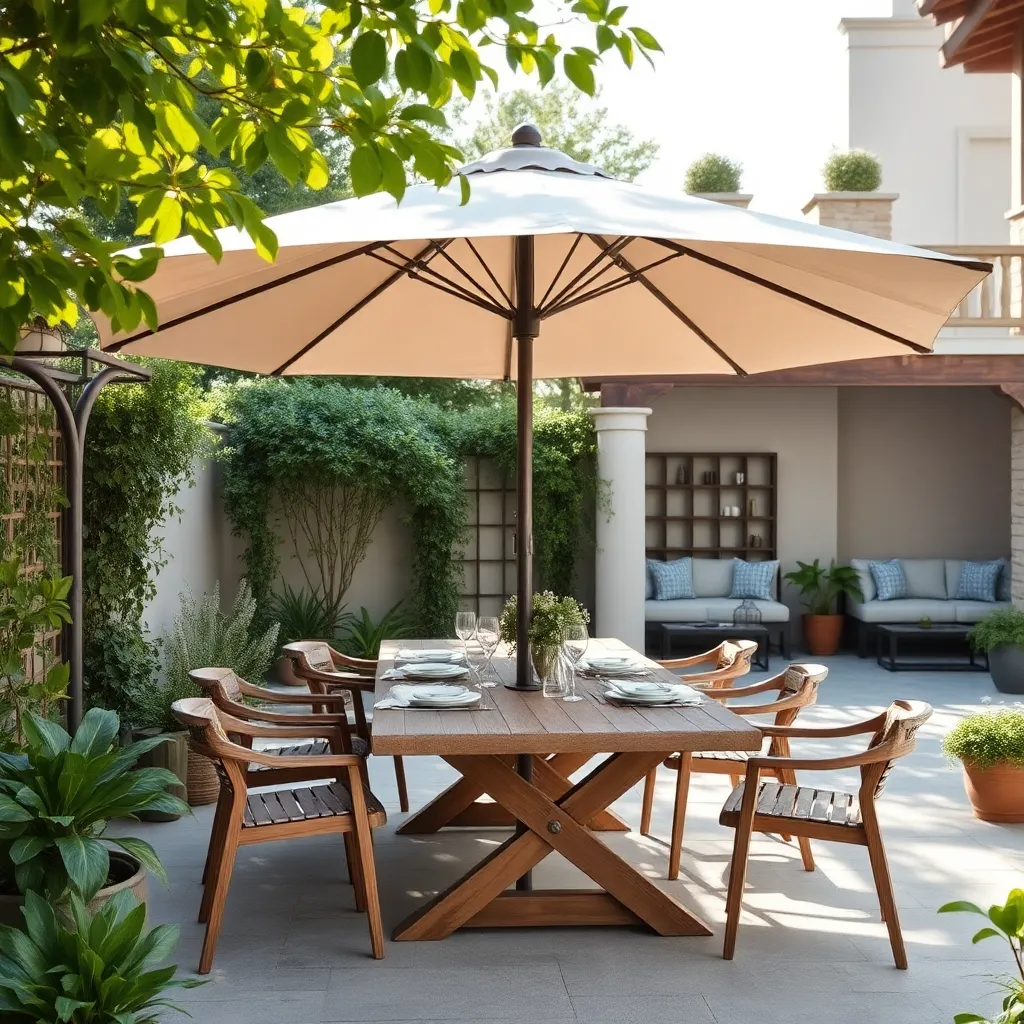
Freestanding umbrellas are a versatile and effective way to add shade to your outdoor spaces. To maximize their impact, consider placing them strategically over areas where you spend the most time, such as seating or dining areas. Choose umbrellas with durable materials like UV-resistant fabric and sturdy frames to withstand various weather conditions. Opt for adjustable or tilting models to provide shade at different times of the day, ensuring that your outdoor space remains comfortable and inviting.
For those seeking a more tailored approach, consider the size and shape of the umbrella to complement your backyard design. If you have a large patio, a cantilever umbrella with a wide canopy can offer extensive coverage without obstructing the flow of space. Anchor your umbrellas securely with heavy-duty bases or ground stakes to keep them stable during windy conditions. By thoughtfully selecting and positioning your umbrellas, you can create a stylish and functional retreat in your garden.
Use Bamboo Screens for Shade
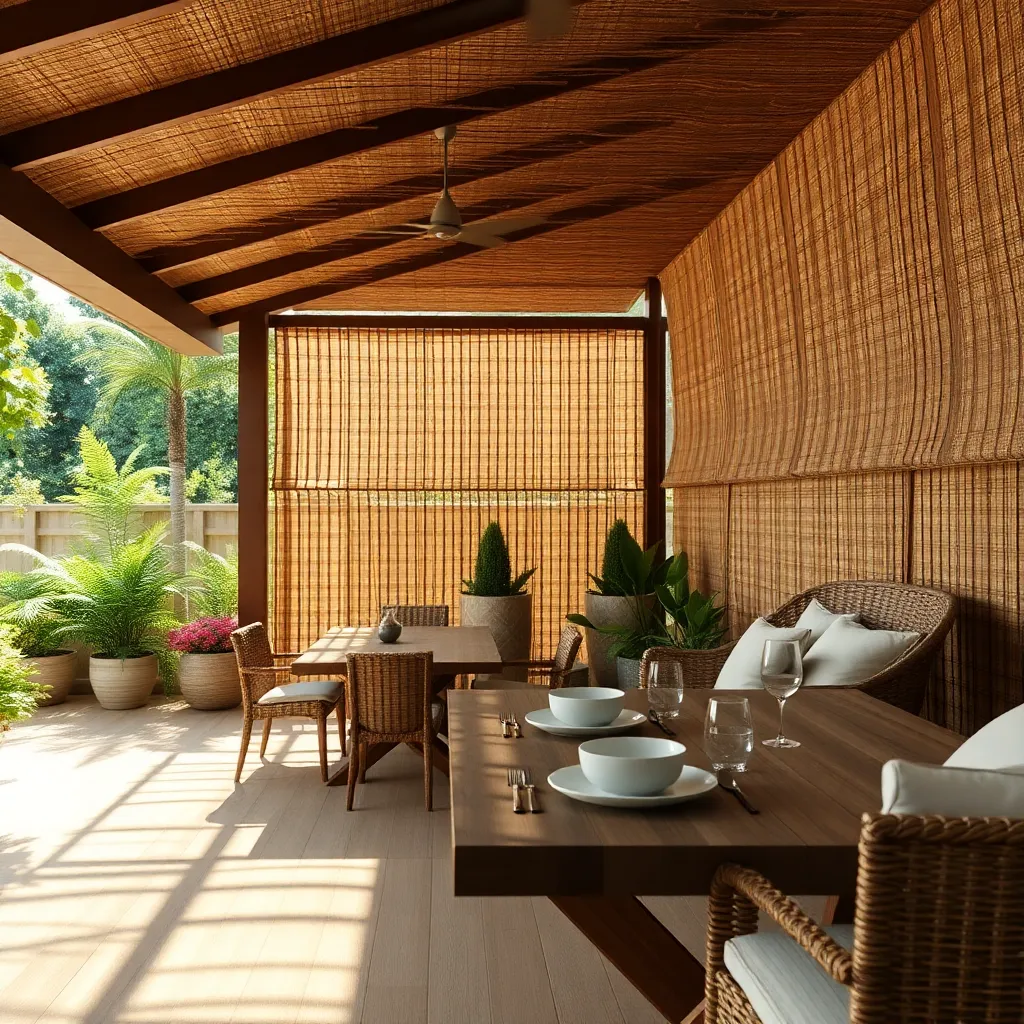
Bamboo screens are a versatile and eco-friendly option for creating shade in your outdoor space. They can be easily installed as standalone panels or attached to existing structures such as pergolas or fences. Bamboo is not only durable but also offers a natural aesthetic, blending seamlessly with various garden styles. For beginners, consider using pre-made bamboo panels, which can be cut to fit your desired dimensions, making installation a straightforward task.
For a more customized approach, advanced gardeners might opt to build their own bamboo screens by securing individual bamboo poles with wire or natural twine. This allows for creative configurations and adjustable shading. Ensure the bamboo is treated to withstand weather conditions and consider using poles approximately 1-2 inches in diameter for stability. By positioning the screens strategically, you can create comfortable shaded areas that enhance both the functionality and beauty of your garden.
Hang Outdoor Curtains for Privacy
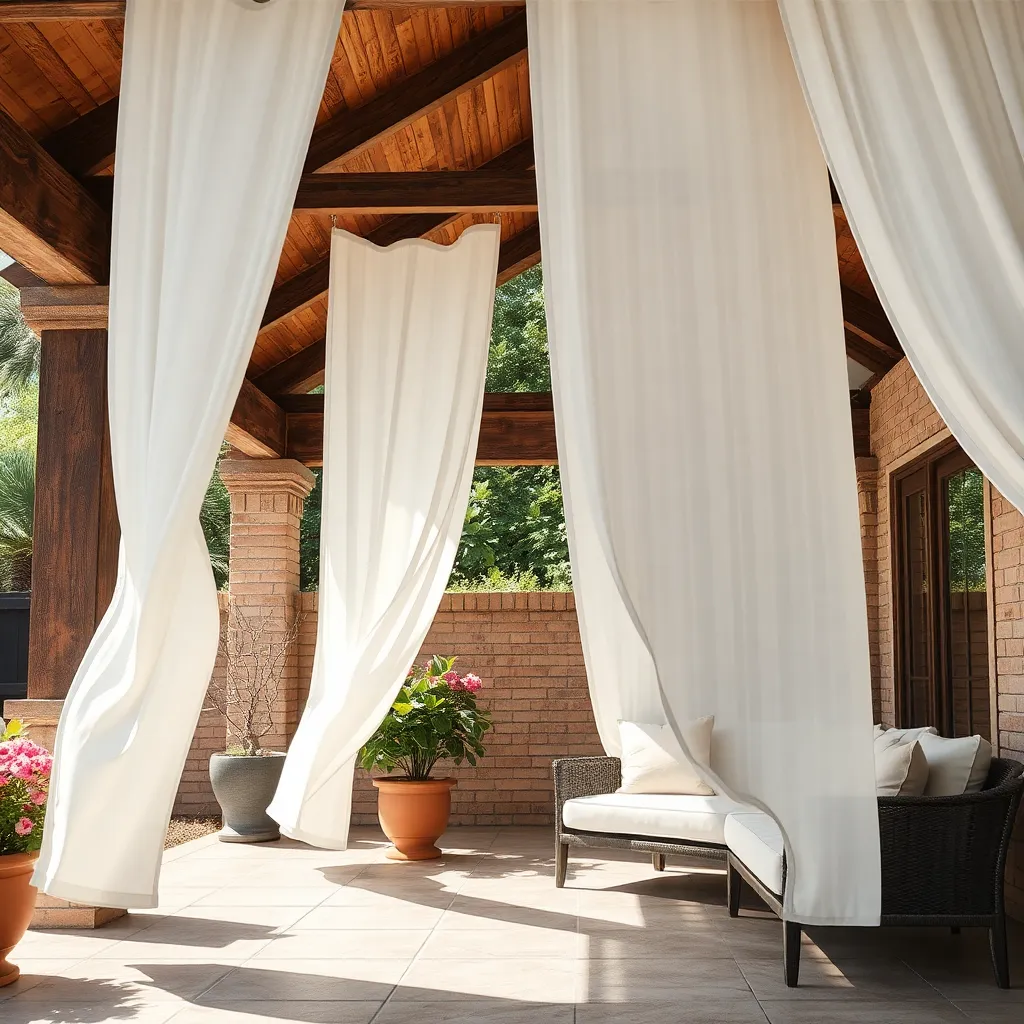
Hanging outdoor curtains is a stylish way to create privacy while adding a touch of elegance to your outdoor space. Choose materials like weather-resistant polyester or olefin fabric, which are designed to withstand the elements. Install curtain rods or tension wires that can support the weight of the fabric and ensure the setup is secure against wind. For a polished look, consider using grommet or tab-top curtains, which are easy to open and close as needed.
When deciding on curtain dimensions, measure the height from where the rod will be installed to the ground, and add a few extra inches for a soft, flowing effect. Choose colors and patterns that complement your outdoor décor, such as neutral tones for a serene atmosphere or bold hues for a lively vibe. For added durability, look for curtains treated with UV protection to prevent fading. Advanced tip: Incorporate tiebacks or hooks to easily adjust the curtains, allowing for flexibility between privacy and openness.
Set Up a Gazebo for Elegance
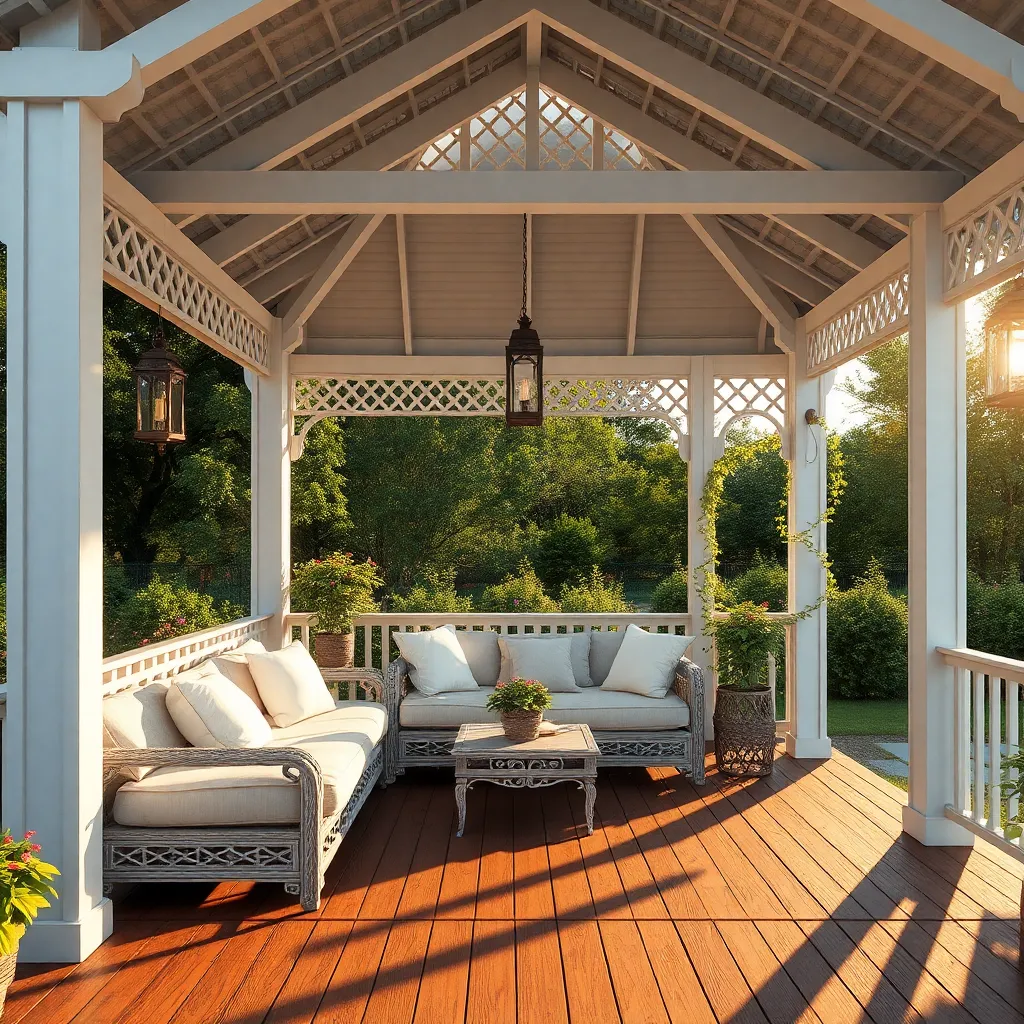
Transform your outdoor space with a gazebo, offering both elegance and functionality. To ensure a durable setup, choose materials like weather-resistant wood, such as cedar or teak, which are not only sturdy but also add a touch of sophistication. For a more contemporary look, consider aluminum frames that require minimal maintenance. When planning your gazebo’s dimensions, a standard size of 10×10 feet works well for most backyards, providing ample space without overwhelming the area. Beginners might start with pre-fabricated kits, which simplify assembly and come with all necessary hardware.
Consider adding design elements like climbing plants or hanging lanterns to personalize your gazebo. Advanced gardeners can integrate built-in seating or a fire pit to elevate the space’s functionality. Ensure proper positioning by placing the gazebo on level ground, and use concrete footings to anchor it securely.
- For a touch of privacy, install retractable screens or drapes.
- Solar-powered lighting can enhance usability after dark, avoiding the need for complex wiring.
By incorporating these elements, your gazebo will not only provide shade but also become a stunning focal point in your outdoor oasis.
Employ Pop-Up Canopies Temporarily
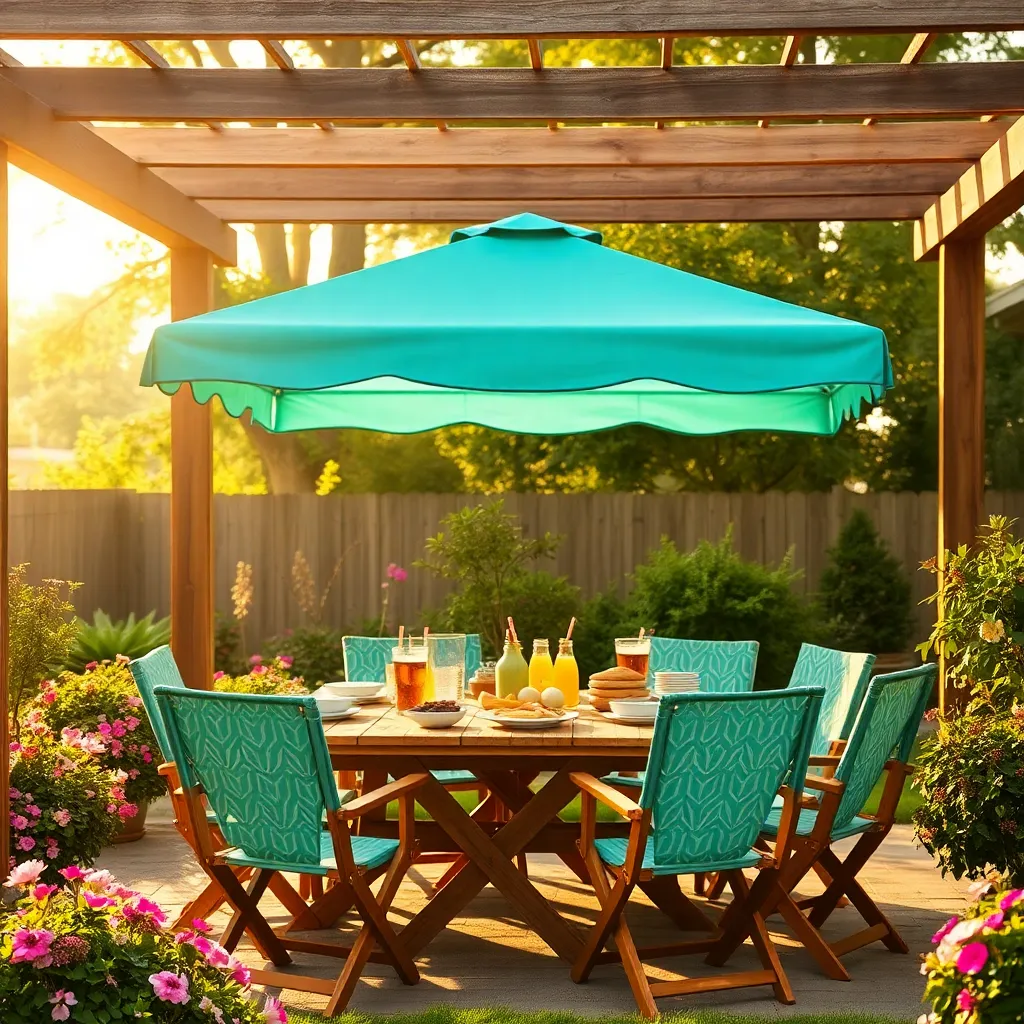
For those seeking a quick and versatile solution, employing pop-up canopies temporarily can be a game-changer. These shelters are ideal for impromptu gatherings or when you’re testing different shade options before committing to a permanent structure. Look for canopies with durable frames made from materials like steel or aluminum and UV-resistant fabric to ensure longevity and protection from the sun.
Opt for canopies that are easy to assemble and disassemble, featuring a simple push-button mechanism for swift setup. Advanced gardeners might consider customizing the canopy with sidewalls or curtains for added privacy and weather protection. To enhance stability, use weight bags or stakes, particularly if your area is prone to wind. With a range of sizes available, you can tailor your choice to fit any space, making pop-up canopies a flexible and practical addition to your outdoor setup.
Install a Shade Structure Pergola

Transform your outdoor space with a shade structure pergola, a stylish and functional addition that enhances both aesthetics and comfort. Start by choosing durable materials like cedar, redwood, or pressure-treated lumber, known for their weather resistance and longevity. For beginners, a basic design with four posts and a simple lattice top can create a charming retreat without overwhelming complexity. Install your pergola in a spot where it can provide optimal shade—typically where the sun is most intense during the afternoon.
For those looking to add more flair, consider incorporating climbing plants like wisteria or grapevines to naturally enhance shade and add a lush, green canopy. Advanced DIYers might explore adding features such as retractable canopies or integrated LED lighting for nighttime ambiance. When building, ensure that the pergola’s posts are securely anchored into the ground, using concrete footings for stability, which is crucial for withstanding wind and weather. Dimensions matter: aim for a height of 8-10 feet to allow ample headroom while maximizing ventilation and openness.
Opt for a Modern Sun Shade Sail
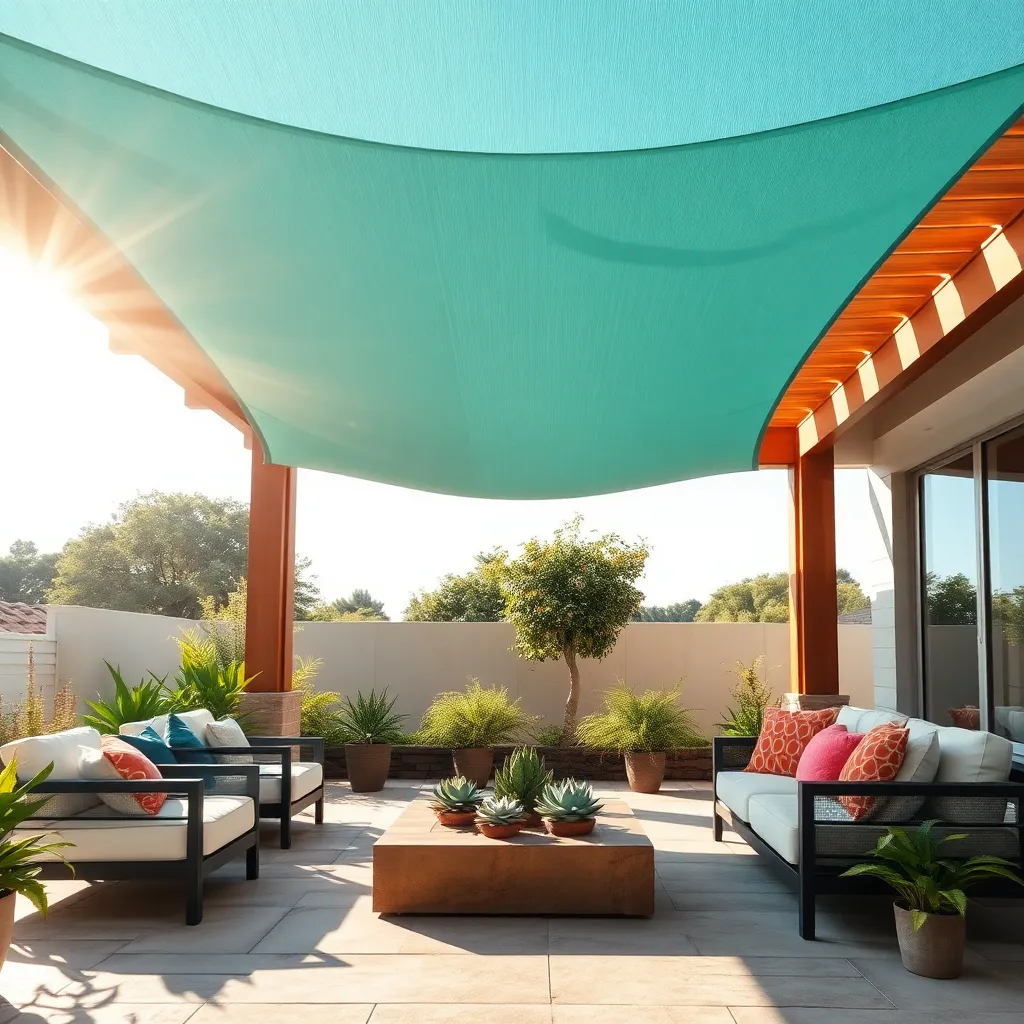
Modern sun shade sails are a versatile and stylish option to create a shaded area in your garden. These sails come in various shapes like triangles, squares, and rectangles, allowing you to customize your space creatively. Choose UV-resistant materials such as high-density polyethylene (HDPE) to ensure durability and protection from harmful sun rays. To install, use sturdy stainless steel hardware and ensure a taut fit by adjusting the tension through turnbuckles or pulleys, which helps withstand windy conditions.
For an added design flair, consider layering multiple sails at different heights or angles to create a dynamic look and increase the shaded area. Advanced tip: Experiment with color combinations to complement your home’s exterior or garden theme. When planning the installation, remember to measure the area accurately and account for a slope (around 20% gradient) to allow rainwater to run off effectively. With these steps, you can confidently transform your outdoor space into a chic and functional retreat.
Conclusion: Creating Beautiful Outdoor Spaces
In exploring the ’12 Shade Ideas for Your Next Project,’ we’ve delved into key relationship concepts that act as the perfect canopy for nurturing meaningful connections. From setting boundaries and embracing vulnerability to fostering open communication and practicing gratitude, each idea serves as a shade that shields and enriches your relationship landscape. We’ve also touched on the importance of empathy, shared goals, and maintaining a sense of individuality, all while weaving in the delicate balance of trust and mutual respect.
To put these insights into action, I encourage you to pick one concept that resonates most with your current relationship scenario and explore it further with your partner this week. Perhaps start by initiating a conversation about what shade means for both of you and how you can collaboratively implement these ideas.
Now is the perfect moment to bookmark this article, ensuring you have a handy resource for continuous growth and reflection. As you embark on this journey, remember that relationship success is not a destination but a dynamic process of learning and adapting together. Together, you can build a resilient partnership that thrives under any circumstance.
